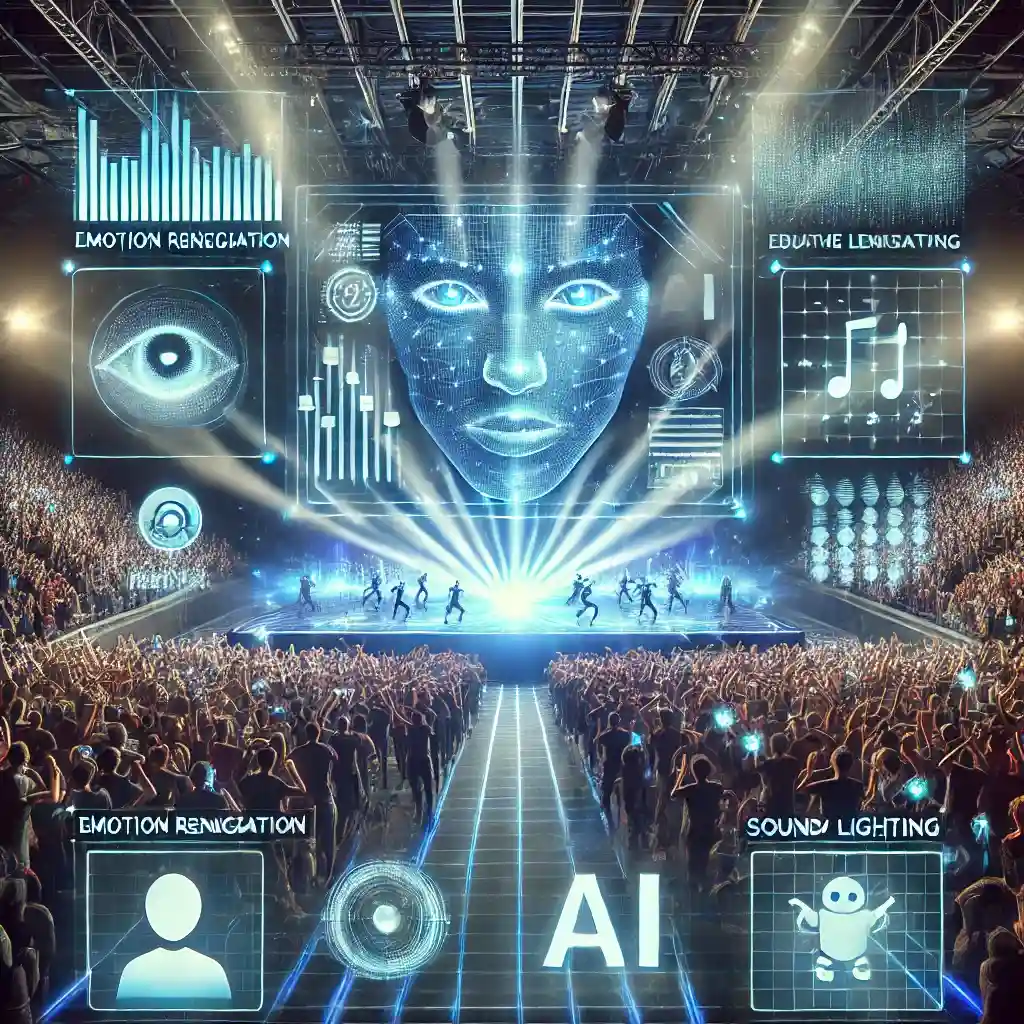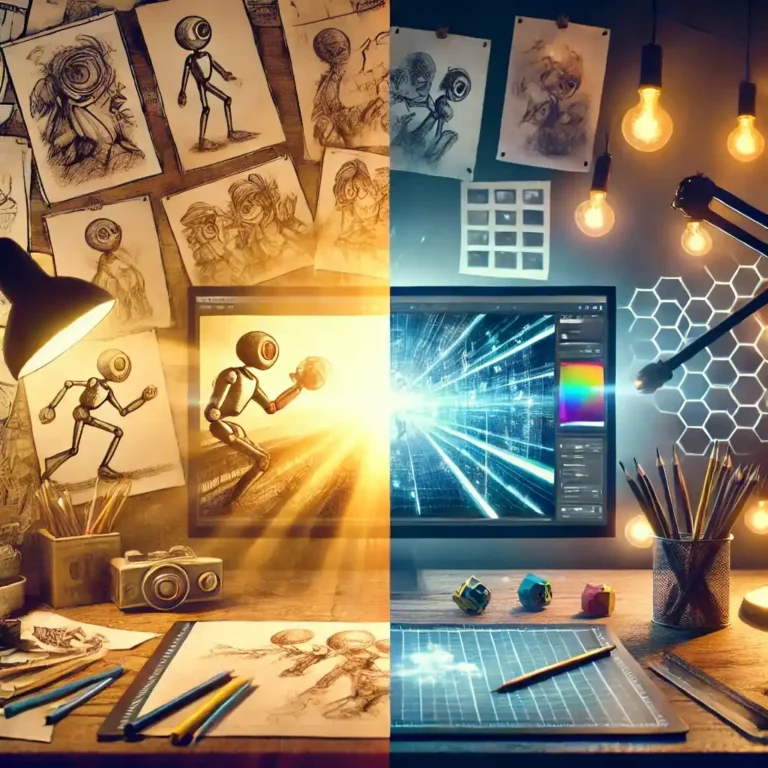How AI Makes Live Events More inclusive Than Ever
AI and Dynamic Audience Engagement in Live Events
Think about your last live concert or sports event. Did it feel immersive, as though the performers or organizers were feeding off the audience’s energy? With the rise of AI, that feeling is more intentional than ever. These days, AI is transforming live events into interactive, customized experiences where the audience actually drives the atmosphere.
AI in live events is far beyond background logistics. In fact, it’s what brings the audience into the action. Through real-time tools and adaptable settings, AI creates a seamless connection between performers and audiences, allowing for in-the-moment adjustments that weren’t possible before.
- Interactive Technology: With tools like CrowdEmotion and Affectiva, event organizers can adjust effects based on what the crowd is feeling. When the audience’s excitement peaks, the lighting or sound can shift right along with it, making the experience almost like a conversation.
- Responsive Effects: Imagine a live concert where the intensity of the lights matches the mood of the crowd or a theatre show where softer lighting is triggered by a calmer moment.
Real-Time Emotion Recognition – Creating Real Connections
Emotion recognition tech has become very important for live events whose purpose is to engage the audience on a personal level. By analyzing facial expressions and body language, AI can gauge audience sentiment and instantly adapt to it.
- At festivals, AI tools track how excited the crowd is. If the energy is high, the lighting might get brighter and the music louder, building up the vibe. AI might suggest a softer tempo or relaxed visuals to hold the audience’s attention if things calm down.
- In gaming, companies like EA use emotion recognition to analyze viewers’ reactions at e-sports tournaments, using the data to heighten on-screen visuals and make the event more interactive for fans.
Popular tools for real-time emotion analysis include IBM Watson Tone Analyzer and Microsoft Azure’s Emotion API, both of which give event organizers insights that help them respond to the crowd’s mood in real time.
Adaptive Lighting and Sound: Setting the Stage with AI
One of the best parts of AI in live events? It adjusts to fit the moment. AI-based lighting and sound systems are vital to creating an event that feels very impressive.
- Concerts: Tools like Lightform bring projection mapping to life, scanning crowd dynamics and adjusting the visuals accordingly. Whether it’s more vivid graphics or just the right amount of brightness, Lightform helps make concerts feel like they’re adapting to the crowd’s mood.
- Sound: LANDR goes further by adjusting audio levels based on feedback, making sure the event’s sound quality is up to the mark.
It is not limited to music only. In sports, these features increase the excitement and engagement of the crowd.
Personalization: Making Every Special
Everyone loves a bit of personal touch. AI makes that possible by tailoring live events to match the crowd’s vibe in real-time.
- Virtual Concerts: Platforms like Wave let fans influence the show by selecting visual effects, song orders, and lighting, making every concert unique to the crowd.
- Audience Participation: Live polling apps like Slido allow fans to vote on elements of the show, from song choices to lighting, making them feel like they’re part of the experience.
Enhancing Virtual and Hybrid Events with AI
During the COVID-19 era, virtual and hybrid events became a huge part of our lives. AI brought them to the next level, making it possible for online audiences to feel just as connected as those attending in person.
- Platforms like Zoom and Microsoft Teams use AI-driven features like live transcription and background noise reduction, ensuring a smooth experience for online attendees.
- At CES, AI tools analyzed online reactions, tailoring the presented content to engage virtual viewers and keep their interest high.
Crowd Safety and Monitoring
AI also plays an unsung role in crowd management, which has huge implications for safety at large events. Tools like BriefCam and CrowdVision help organizers keep an eye on crowd density, ensuring safe flow and alerting security to potential bottlenecks.
- AI can detect when one area becomes overcrowded, allowing staff to intervene before it becomes a problem.
- By managing crowd movement in real-time, AI creates a safer and more enjoyable environment for attendees.
AI in Live Gaming and Competitions
Gaming events have taken AI’s capabilities to engage, turning competitions into dynamic experiences. Kahoot! and Quizizz are platforms that keep audiences engaged by adapting questions to the crowd’s knowledge and energy.
- In major gaming tournaments, AI tools display real-time crowd reactions on big screens, feeding off the audience’s excitement.
- Organizers can adjust the game to match the energy of the crowd.
Applications beyond Entertainment
Ability to engage has great potential in other fields as well:
- Education: A classroom that adapts to the mood of the students, making learning more interesting.
- Health: AI-driven experiences could ease the stress of the patients during treatments by adjusting the environment to feel better.
- Corporate: AI can customize the workshops in accordance with the feedback received, which makes them more efficient and stimulating.
The Future:
AI transforms live events into a distinctive and exciting experience. From concerts to virtual conferences, applications such as CrowdEmotion, Affectiva, and Lightformallow to make connections, and provide an experience that is personalized.
As AI technology continues to advance live events are set to become more interactive and inclusive. The line between the performers and the audience is disappearing, creating a space where everyone is a part of the performance. AI-powered events don’t just offer performances, they are an experience shared by all, letting everyone be a part of the show.
Have you experienced an AI-powered event? Share your thoughts or let us know which AI tool excites you the most for live events! Join the conversation in the comments below.






